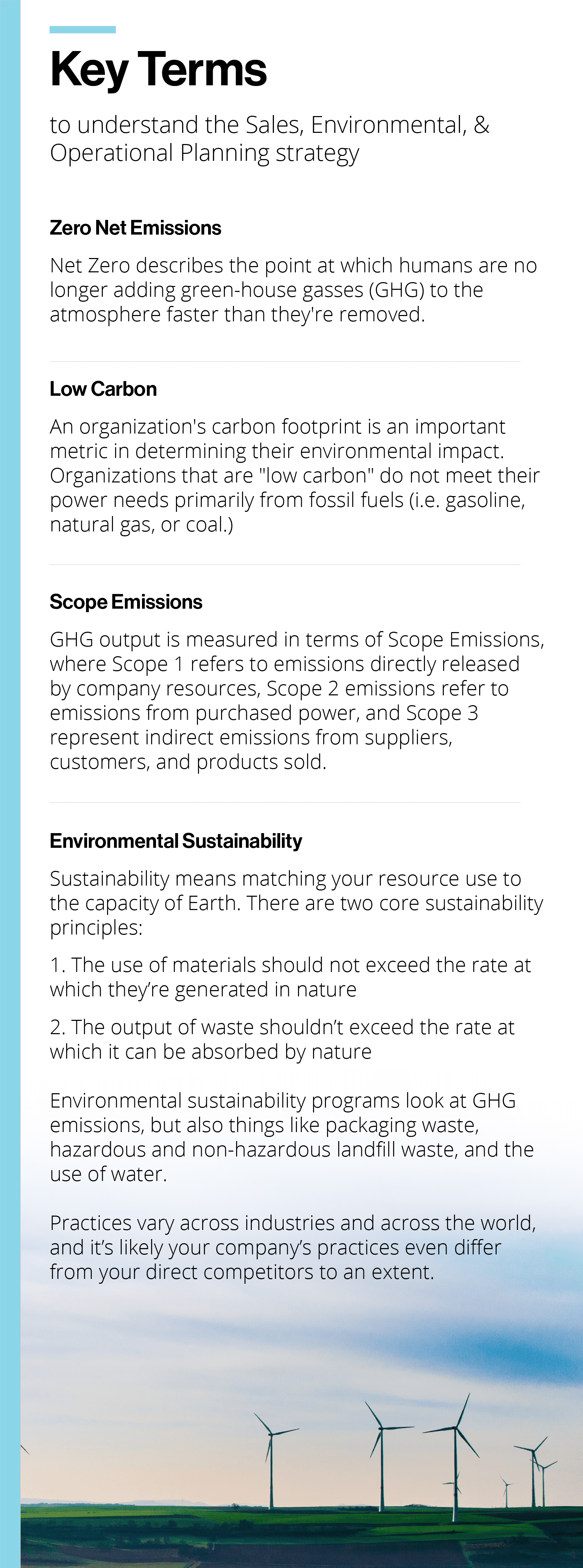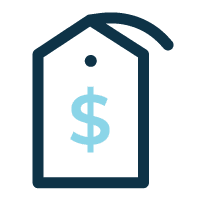Adding Environmental Impact to Your Sales & Operations Planning
Sales & Operations Planning (S&OP) is a monthly discipline that many businesses use to align executive leadership around long-term financial and operating performance. It covers details such as product demand forecasts, new product initiatives, material needs, and operating schedules for equipment. The S&OP process typically looks out 1-3 years, and a key component is the understanding of risks, opportunities, and potential scenarios based on demonstrated business performance data.
Forecasting your future environmental sustainability profile, whether it is GHG emissions or waste generation, requires understanding of the exact same factors as S&OP – what you are going to sell, what new products are being developed, what raw materials you need, and how you will operate to deliver it.
Understanding the impacts and financial feasibility of proposed environmental initiatives must also be done within the context of the overall business plan. Your Environmental Sustainability improvement plan must be a balanced solve against both Environmental and Financial targets, with buy-in from executive leadership.
Do you see the connection? By adding the Environmental dimension into the existing S&OP process, you create a new framework for sustainability planning that is jumpstarted with access to fully vetted business assumptions and the decision-makers that are required to make the big strategy decisions.
Bring Environmental planning more directly to your executive team by changing your S&OP to SE&OP!
Engage Environmental With the Rest of Your Business
Why wasn’t the Environmental Team already present in S&OP? They’ve historically not been a part of S&OP because the connections to financials and business performance seemed weak. Environmental compliance, sustainability, and capital planning efforts were recognized as important and sponsored by leadership but could still be managed by small groups of specialists working in isolation and disconnected from the rest of the business.
It’s obvious in 2022 that delivering both long-term financial performance and environmental sustainability are an unavoidable and tightly connected reality for every company. Face that reality head-on by engaging your environmental leaders at the big table through the implementation of SE&OP.
Engage the Rest of Your Business with Environmental
The goal is straight forward: create a detailed plan for improvements that achieves your environmental targets, such as Net Zero, and is net neutral or positive from a financial perspective. Yes, sustainability can have a positive effect on financials.
Sustainability is ultimately about reducing waste, and successful reductions can often lead to cost savings. Let’s consider an example from supply chain. Companies like Toyota recognized early that inventory was the physical manifestation of waste, meaning that every time they saw inventory, they should think about the underlying process design problem that created it. Eliminating the root cause of the inventory waste allowed the inventory to be reduced with positive impacts on the business. The business brought focus to inventory because of this benefit.
Do you see the connection? Pollution is no different than inventory. It is a sign of process waste, and often new environmental ideas will save money – less electricity, higher process yield, less purchased packaging material, or reduced waste disposal costs.
Like supply chain, there are operators on the floor and experts from other disciplines that are experts at waste reduction, and many also have a personal passion to protect the environment. Leverage that discretionary effort and bring these people to your Environmental strategy sessions, connecting them with SE&OP insights and increasing the size of the idea pool. Your environmental team just got a lot bigger.






